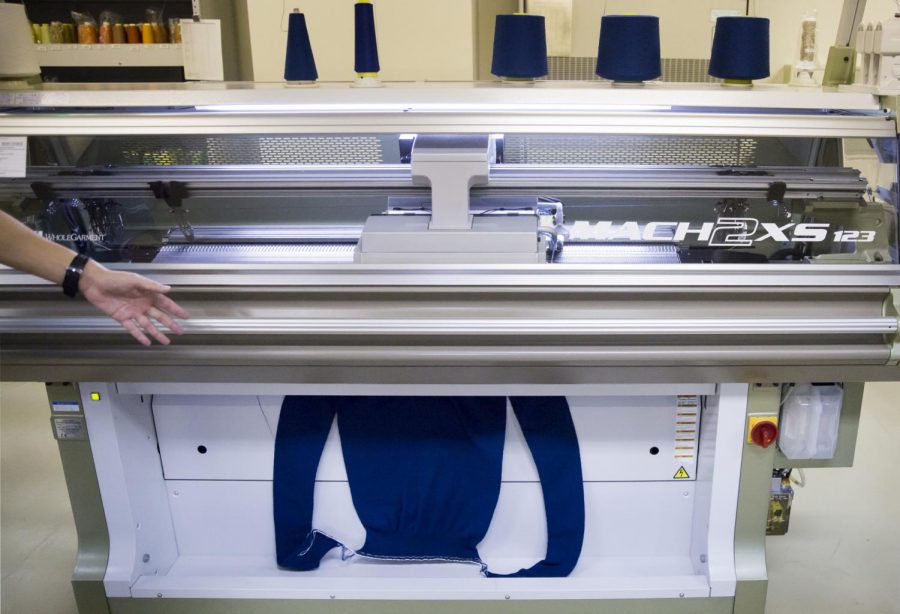Asian designers strive for sustainability
With environmental awareness becoming more and more recognized, it is important for fashion brands to be aware of the materials they use and to make more sustainable clothing. While some fashion designers dismiss the issues of the environment, others make change to how they manufacture their clothes.
Many Asian designers create their clothing from eco-friendly resources, such as sustainably grown fiber crops or recycled materials. In Asian culture, it is important to not waste materials, but rather reuse them.
In Japan, there is a term, “mottainai,” which loosely translates to “what a waste.” This term holds history as it originates from a Buddist belief that every object has special value and should be utilized for its full life cycle. This has been believed by cultures for centuries.
Director of Japan Fashion Week, Kaoru Imajo, told CNN that “mottainai and handmade culture is everywhere in Japan,” and that they have been fixing “old carpets, clothes, and fabric,” so they can use them as long as they can.
What is known as a Japanese vintage fabric, or boro textiles, are traded very expensively, and with the use of this fabric, many Japanese fashion labels are channeling traditional ideas in the name of sustainability and embracing centuries-old garment production techniques. According to CNN, they are developing and introducing new technology “to reduce waste and lessen environmental harm throughout the production process.”
Japanese manufacturer Shima Seiki has created computerized Wholegarment knitting machines, which seamlessly knits Wholegarment items in their entirety in a singular piece. Shima Seiki spokesperson, Masaki Karasuno, said that up to 30% of fabric is wasted in standard production when individual pieces of pattern are cut from bolts of fabric before being sewn together. “All of that is eliminated when an entire garment can be knitted in one piece directly off the machine,” he said.
One Asian-owned fashion brand that embraces their sustainable clothing is A.C.F Clothing. This brand borrows from the philosophy of circular economy and instead of creating a whole new product with completely new materials, A.C.F Clothing uses dead stock from manufacturers and upcycles them into gender-neutral streetwear. Their clothes are 100% vegan and on their website, they note that they “believe that sustainability should be the norm,” and “is a requirement, not a courtesy.”
Korean Fashion designer Ji Won Choi, is another designer who uses sustainable materials to make beautiful and colorful clothing. On her instagram, she showcases many of her new pieces that have been made by sustainable materials.
The line work in her garments are very interesting and she styles the clothes in so many different ways. Because of her immense talent, Adidas collaborated with her and she had her own line of clothing through their company in 2019. Her pieces have been worn by celebrities such as Beyoncé and Kendall Jenner. Ji Won Choi said that she wanted to “bring in both Korean and American cultures and mix them together and make it feel like a new modernized version.” On her website, Choi also states that she aims to promote global cultures “by bringing different parts of the world together, while being created responsibly and sustainably.”
A newer Asian-owned fashion brand that is vocal about sustainable clothing is Nisai. Nisai was featured at Tokyo’s Rakuten Fashion Week for their Autumn-Winter 2021 collection. This collection exhibits upcycled used clothing that was used to design their unique looks. Fabrics were repurposed and patched together to create new garments. Brand designer, Naoki Matsuda, stated that their inspiration when creating pieces are the museums, galleries, and important cultural property buildings in Tokyo. Matsuda stated in an interview that they currently go to “a used clothing wholesale warehouse to purchase used clothing materials.” They want their clothes to be 100% made of used clothing material.
As fashion brands become more aware of the importance of sustainable clothing, it’s crucial to know why brands need to alter the way they make garments. Although consumers may not be able to tell, a lot of clothing that is made by popular brands have dangers of industrial chemicals in the clothes. Other common issues include the fact that a lot of environmental damage comes from mainstream industrial practices, and there are many unsafe working conditions for the people who make the clothing that these popular brands put in their stores.
It is hopeful that with time, fashion brands adapt to using more eco-friendly materials to make their garments. Clothes can be just as fashionable with the use of sustainable and upcycled materials, and it would make a huge impact on the environment.

I am currently a junior at NHS. I took Journalism to improve my writing skills and my research skills. I like that I can write about topics that interest...









Paul Taylor • Apr 22, 2021 at 1:43 pm
What a great article, Hailey! I think I learned the most about textiles from your thoughtful writing. It’s fascinating to see how creative ideas relating to the environment, technology, old traditions and designer fashions can all be blended together to make a better world. Keep up the great work! Mr. T.